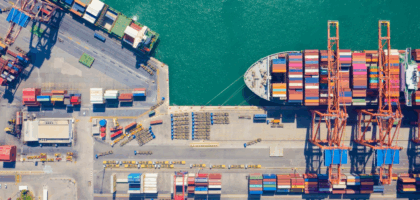Tariffs. They have been a part of trade since ancient times. Governments have long taxed goods coming into and through their territories as ways to increase funds directly for the ruler or wider government. Today, it is really no different. The major change though is how tariffs are currently applied.
Let’s dive into their purpose, history, benefits, and unintended side effects.
What is a tariff and its purpose?
A tariff is a tax imposed by a country on goods or services imported from another country. Many times, you will see them referred to as a “customs duty” (the two words are used interchangeably).
A tariff serves several purposes:
- They are used to safeguard domestic sellers;
- They help maintain national security;
- They protect domestic consumers;
- They are a source of revenue for the government;
- They help boost budding industries; and
- They generate domestic employment.
When did the first-recorded tariffs occur?
Believe it or not, some of the earliest tariffs are recorded from texts in the 3rd and 2nd millennium BCE. The Old Assyrian trade colony in Anatolia, in the ancient city of Kanesh, traded precious metals to ancient Assyria in modern day northern Iraq. The trade was taxed by the local rulers in Anatolia and along the trade route in Syria. Transit costs and the merchants living in Kanesh were taxed for conducting their trade enterprise which appeared to be mutually beneficial.
Pretty cool, right?
When were modern tariffs implemented?
Modern tariffs were first imposed in the late 18th century when Great Britain began dominating oceanic trade with its powerful navy. At the time, tariffs were roughly 50 percent, which made the importing of goods basically uneconomical. The Tariff of 1789 was one of the first policies enacted that specified the rates and types of tariffs in the United States.
After World War II, the General Agreement on Tariffs and Trade (GATT) was created with 23 countries to help foster multilateral trade and promote the global economy. The GATT became the foundation in which the World Trade Organization (WTO) was built, becoming its successor.
What are the benefits of tariffs?
Tariffs mainly benefit the importing country, as they are the ones setting the policy and receiving the money. Tariffs:
- Produce revenue on goods and services brought into the country;
- Can serve as an opening point for negotiations between two countries;
- Can be used to support a nation’s political goals;
- Help the country stabilize or regulate its own industries;
- Allow the government to set taxes on domestic products that are in line with international tariffs to level the playing field; and
- Can make the market predictable.
What are some of the drawbacks and unintended side effects of tariffs?
While tariffs have benefits, they also have some drawbacks and potentially negative side effects. They can:
- Antagonize existing issues between governments;
- Trigger intensifying trade conflicts between countries;
- Hurt domestic consumers, as a lack of competition tends to increase prices;
- Make domestic industries less efficient and innovative by limiting competition;
- Generate tensions by favoring specific industries or regions over others; and
- Devolve into an unproductive cycle of retaliation, also known as a “trade war.”
Resources:
- Tariffs (National Geographic Society)
- What is a Tariff? (Shiprocket)
- How Did Trade Tariffs Develop? (DailyHistory.org)
- Tariff Definition (Investopedia)



